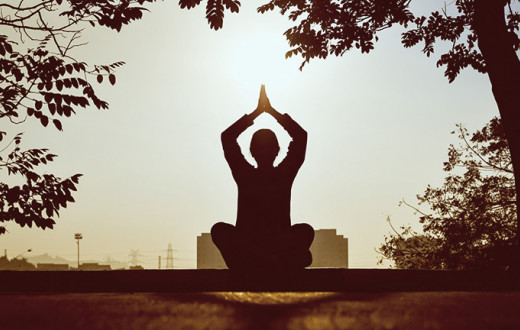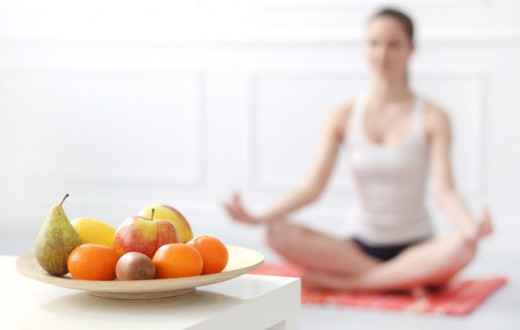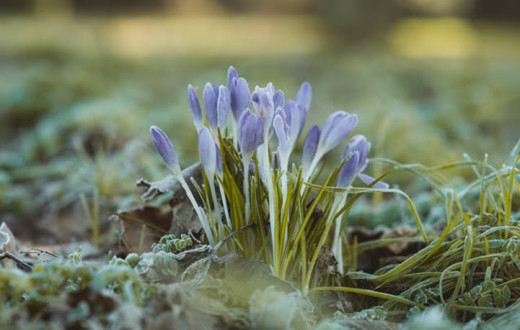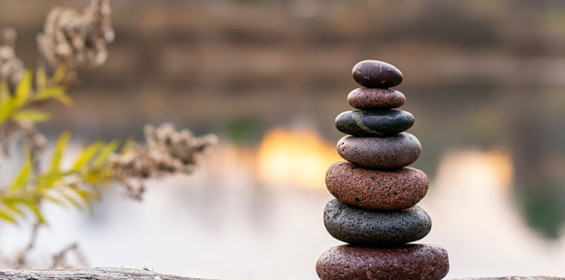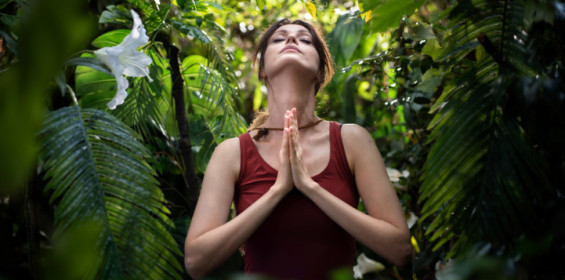By Anuradha Gupta
With skin being our largest organ, learn a holistic approach to caring for your skin using the Ayurvedic route. Read on for 12 tips to a radiant you!
Beauty isn’t skin deep. In an age where media often idolizes the unattainable, focusing on good health, self-care and peace can redefine the paradigm of beauty. To quote the founder of Art of Living, Gurudev Sri Sri Ravi Shankar, “Beauty is an inner phenomenon. It lies in the heart of every person.” What does the 5,000-year-old healing science of Ayurveda have to say?
The Ayurvedic approach to Beauty
Ayurveda has a holistic definition of beauty that includes inner, outer, and lasting beauty, “Roopam, gunam, vayastyag, iti shubhanga karanam.”
Ayurvedic skincare solutions are both localized and systemic. They are natural and holistic, attending to the root cause of imbalances. For someone with dry skin, consistently using cosmetics as moisturizers can only go so far. Ayurveda addresses internal imbalance to provide lasting, therapeutic relief.
Ayurvedic protocols address common causes of skincare issues like stress, underlying health conditions, hormonal imbalances, environmental toxins, and improper diet, digestion, and lifestyle.
The Ayurvedic skincare regimen is personalized.
Ayurveda offers skincare products that are time-tested, natural, and benign.
Ayurveda is considered a form of complementary medicine in the US and you can seek a consultation to manage skin conditions (Kusta Rogas) like psoriasis and eczema.
Inner and Lasting Beauty
Our skin is a reflection of our overall health. “Swasthya”, the very definition of health in Ayurveda is being established in the self. When we are centered and well, our inner beauty shines through. While skin dryness, wrinkles, and pigmentation are natural in our golden years, attending to our wellbeing and skincare is an important part of aging gracefully.
12 Ayurvedic Skincare tips for a Radiant You!
Have you ever pampered yourself with an Ayurvedic facial? Tried Kumkumadi Oil maybe? Outer beauty involves radiant skin (and hair) with a personalized regimen. Here are twelve tips to enhance your beauty regimen,
1. Find out your skin type!
Ayurveda encourages you to know yourself; specifically, what Doshas (energy principals) dominate in your Ayurvedic constitution. When Doshas are in balance, Kapha lends proper moisture balance, Pitta aids skin, and hormonal metabolism, and Vata, efficient circulation of blood and nutrients to the skin.
Find your constitution through this indicative quiz. Be mindful that if you have an imbalance your skin type may be different from your constitution (Pitta with Vata imbalance would have Vata skin). Aging also leads to the Vata phase of life and skin type could change.
Ski type/Combination | Nature of skin |
Vata | Dry, thin, cool, easily dehydrated. Imbalances include dark circles, chapped skin, premature wrinkles, and greyish pallor. |
Pitta | Sensitive, photosensitive, looks ruddy, warm, prone to freckles and moles. Can have rashes, acne, discolorations, and inflammation as imbalances. |
Kapha | Moist, radiant, thick, oily, more tolerant of the sun. Can be clammy or excessively oily with edema, blackheads, and pimples. |
Vata-Pitta | Dry and sensitive |
Pitta-Kapha | Oily and Sensitive |
Vata-Kapha | Dry with Oily zones |
2. Personalize your regimen!
Vata skin benefits from a regular, nourishing, rehydrating routine, oleation, and full-body massages with warm oil. Use a gentle cleanser and moisturize daily. Hydrate enough and focus on balancing Vata.
Pitta skin needs a calming, cooling, and nurturing regimen with gentle cleansing and moisturizing. Avoid tanning, harsh cosmetics, and exposure to the sun or excess heat. Focus on ways to balance Pitta.
Kapha skin is oily and accumulates toxins; cleanse with a gentle exfoliant or try a light warm-oil massage. Try a dry scrub and detox the body and skin both. Find ways to balance Kapha. For Vata-Kapha skin follow Vata guidelines with extra cleansing of oily zones.
3. Incorporate skincare in your daily routine (Dinacharya): Start your day by splashing water on your face. Include cleansing, exfoliation, repair, rejuvenation, protection, and moisturizing of your skin daily (read about these steps here).
4. Pamper yourself with a self-massage: Snehana is the Sanskrit word for love and oil-application; try a daily full-body Abhyanga or self-massage which pacifies Doshas, enhances glow, hydrates, nourishes, detoxifies, and rejuvenates the skin. For oily Kapha skin, try Udvartana or an herbal-powder massage.
5. Make seasonal modifications (Ritucharya): Vata is prone to imbalances in fall and early winter when you need to moisturize extra, during spring Kapha season focus on cleansing and follow a Pitta-pacifying protocol in the summer. For Vata-Pitta skin, attend to winter dryness and Pitta sensitivity in summer; follow a similar protocol for other combination skin types.
6. Try do-it-yourself recipes: From cleansers (chickpea or mung flour with milk), scrubs (lemon, sugar scrub), toners (rose water), to moisturizers and natural treatments (neem oil for inflammation, honey for wounds), there are many Ayurvedic recipes you can make at home. Be mindful about allergies (and test ingredients in your inside elbow).
Face Pack recipe: In 4 tablespoons of mung, chickpea flour, or Fuller’s Earth as a base add ½ tsp Triphala, ¼ tsp turmeric, ½ tsp dried neem, 2 tsp’s rosewater; mix into a paste. For Vata skin add milk or ripe avocado, cucumber or aloe vera for Pitta, and ripe papaya or honey for Kapha to make your own face pack!
7. Break a sweat: Exercise improves blood circulation and toning (be careful if you have a skin condition that flares with sweating). Remember to flex those facial muscles as well; your smile adds beauty to the world!
8. Do yoga regularly: Yoga lends serenity, has numerous health benefits, aids detoxification of the body and skin, and gives you an inner – and outer glow. Read more about Yoga for glowing skin here and try a simple 7-minute Sukshma Yoga for relaxation.
9. Attend to your diet and hydrate: Ayurveda believes that skin health depends on nutrient fluid, blood, muscles, and - proper digestion. Follow Ayurvedic dietary principles; eat at regular mealtimes and favor fresh, easy-to-digest foods while avoiding junk and overeating that can cause toxins to build up. Be sure to hydrate enough so the skin stays moisturized and supple.
10. Don’t neglect that beauty sleep: This is one of the pillars of health in Ayurveda and no wonder; sleep deficits can cause inflammation, reduced immunity, puffy eyes, fine lines, impact skin aging, and (research indicates) reduce perceived attractiveness!
11. Explore Ayurvedic cosmetology and treatments: Herbs like Turmeric, Neem, Amalaki, Sandalwood, Manjistha, GotuKola, and Aloe Vera are great for the skin as are Ayurvedic therapies like Abhyanga, Nasya, Udvartana, Garshana (dry skin brushing), Marma, Shirodhara, Swedana (herbal steaming) and cleansing therapies like Panchakarma. Consult an Ayurvedic practitioner for a personalized protocol.
You can explore Ayurvedic spas like Shankara Spa and skincare products from companies like Sri Sri Tattva, USA. Ashish Pandya, VP, Education of the leading skincare line, Shankara Naturals applauds Ayurvedic wisdom with its natural formulations and adds, “We craft our products like the Timeless collection for healthy, radiant skin and a beautiful, meditative experience.”
12. Meditation enhances inner, outer, and lasting beauty: Ayurveda emphasizes that the mind channel (Manovaha Srotas), stress and skin are closely related and this is corroborated by the modern concept of psychodermatology. Meditation reduces stress, improves overall health and immunity, and is a rejuvenating practice. I’ve observed that many long-term SKY breath meditation practitioners have a beautiful, happy presence with glowing skin! I invite you to a free meditation session, Beyond Breath, to find out more.
Anuradha Gupta is an Engineer, MBA, writer, and Ayurvedic Wellness Practitioner. She has a corporate background and volunteers for Art of Living and other nonprofits. You can find her on Facebook or LinkedIn.







